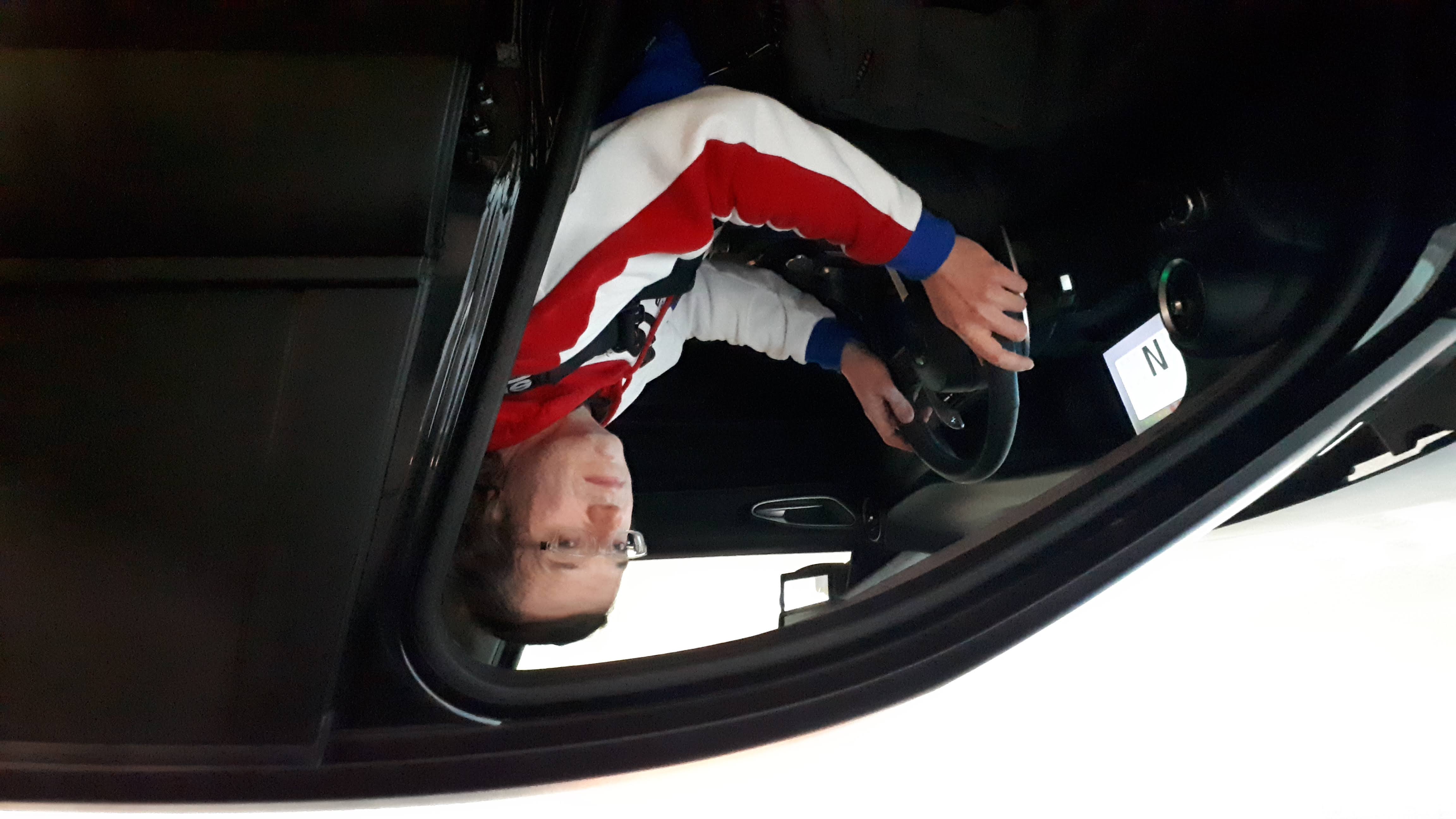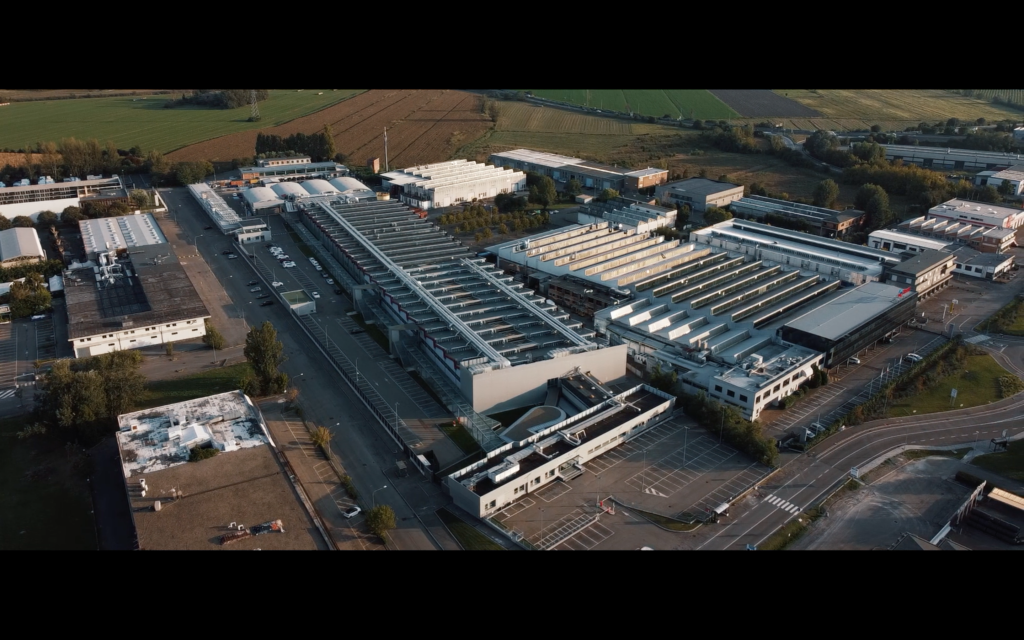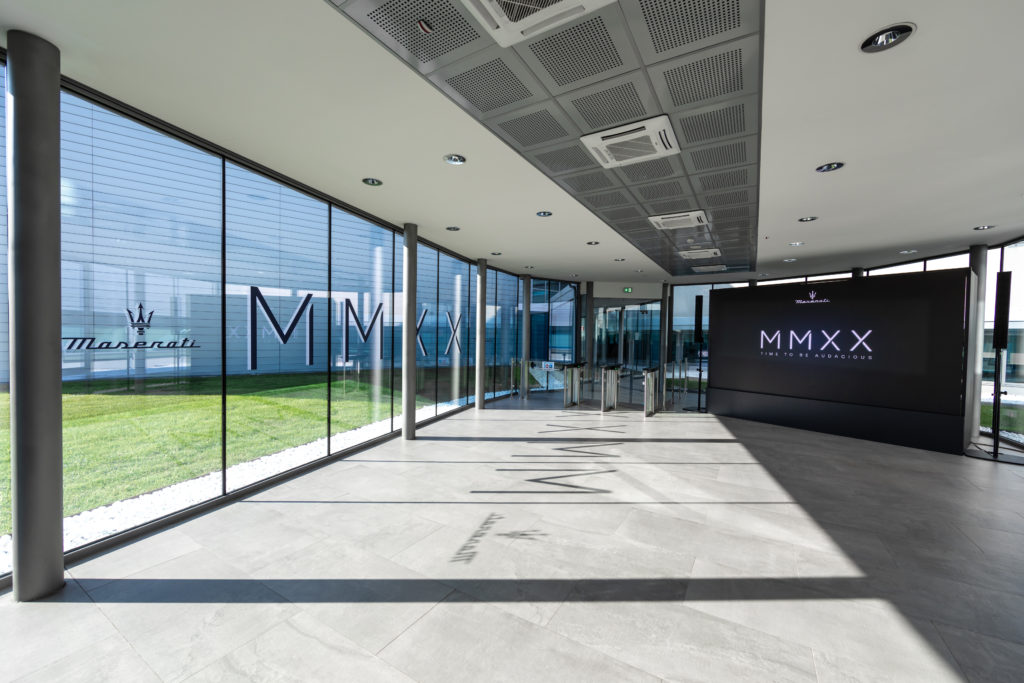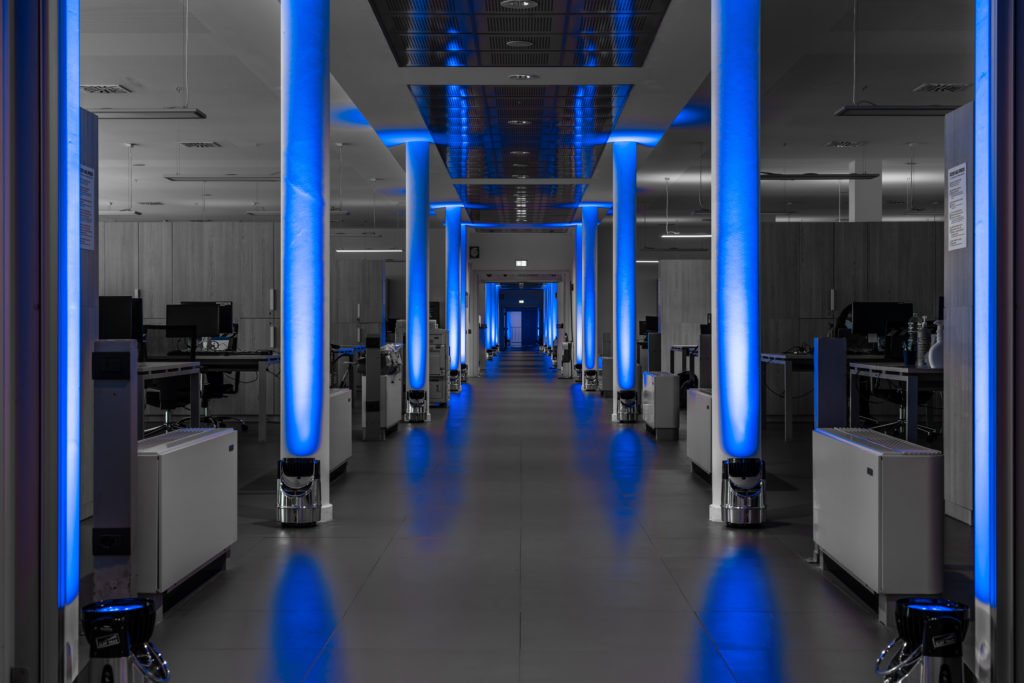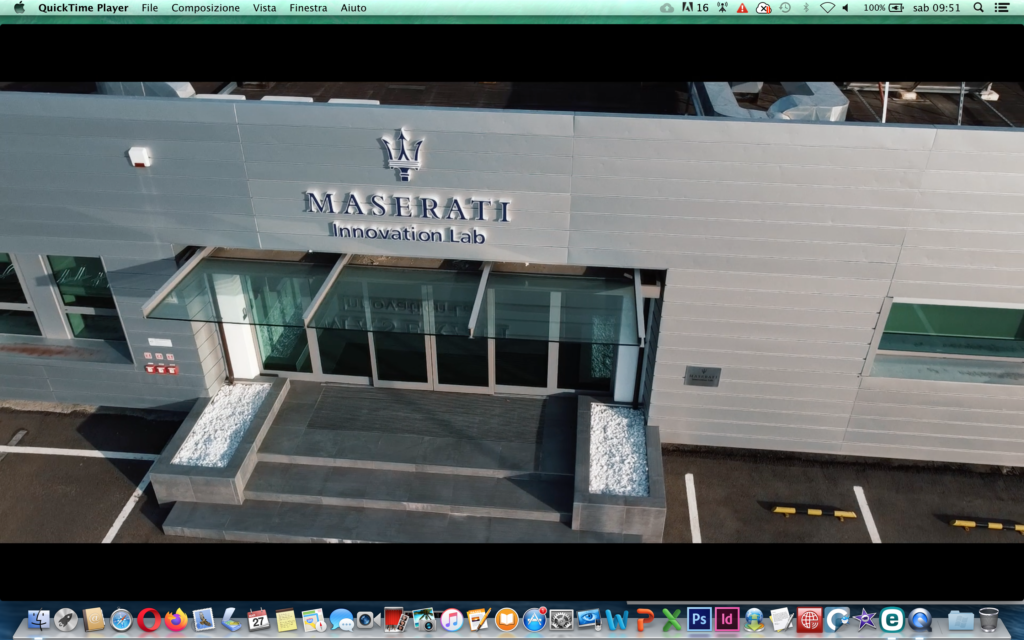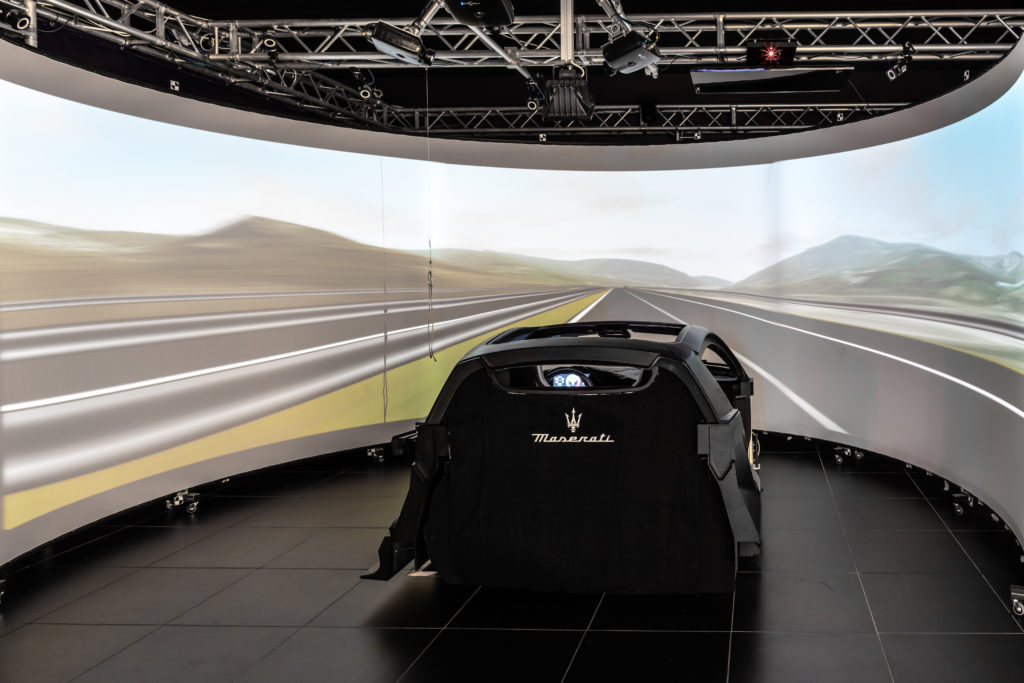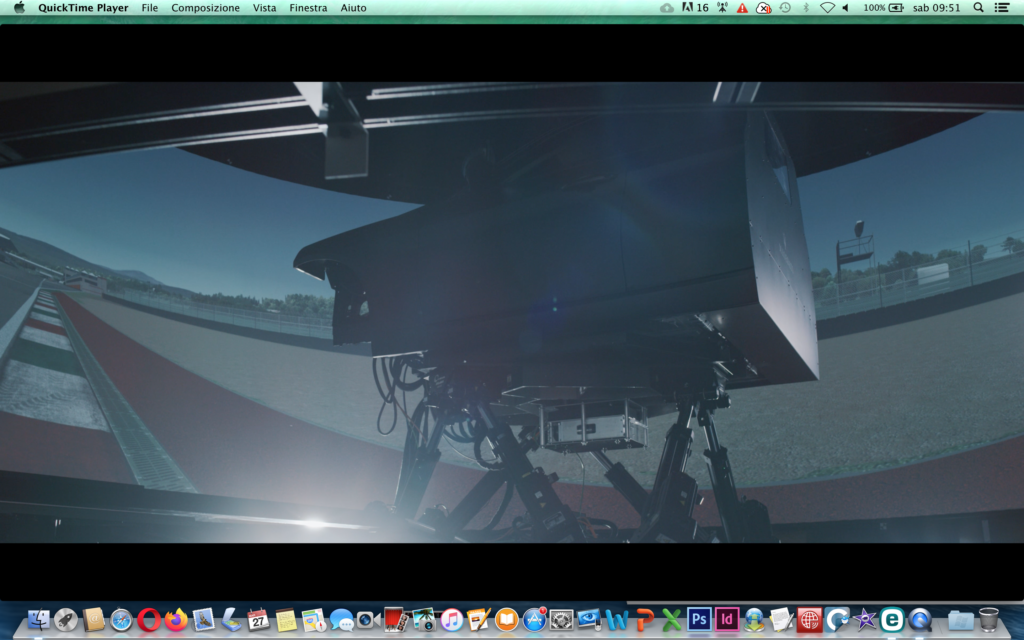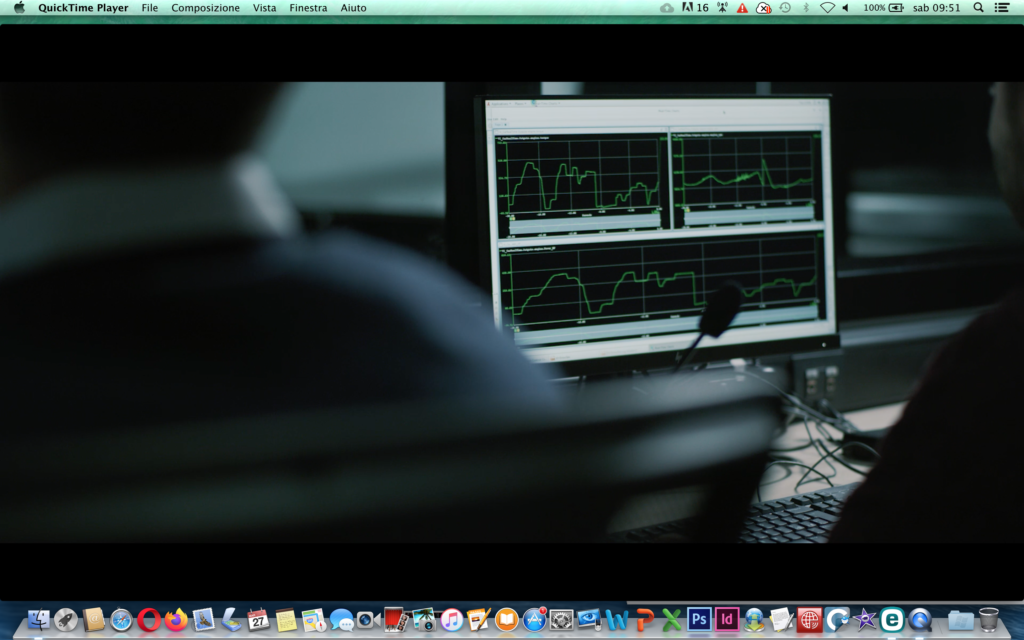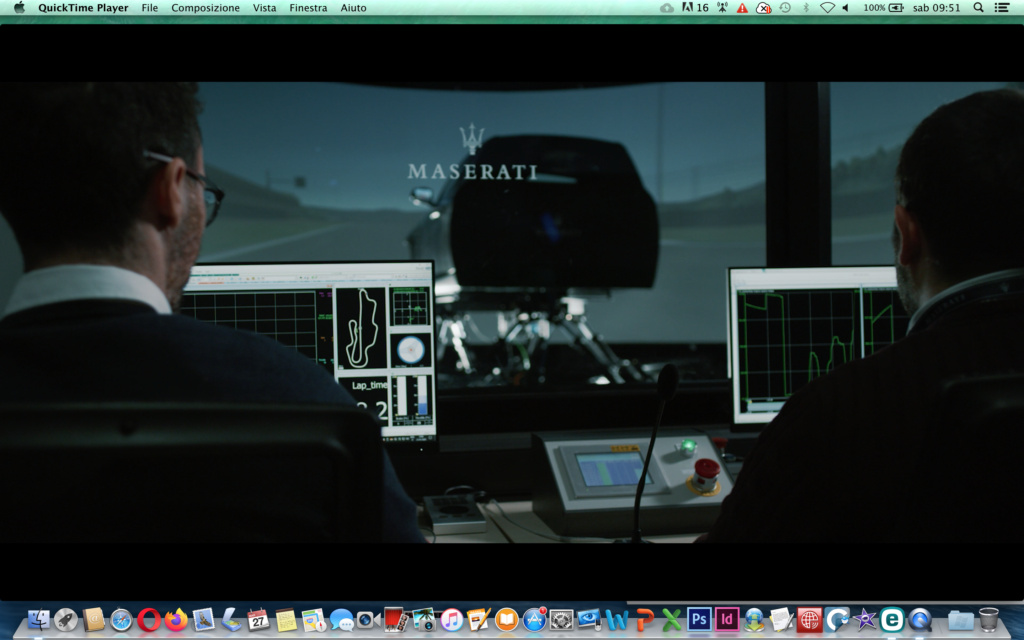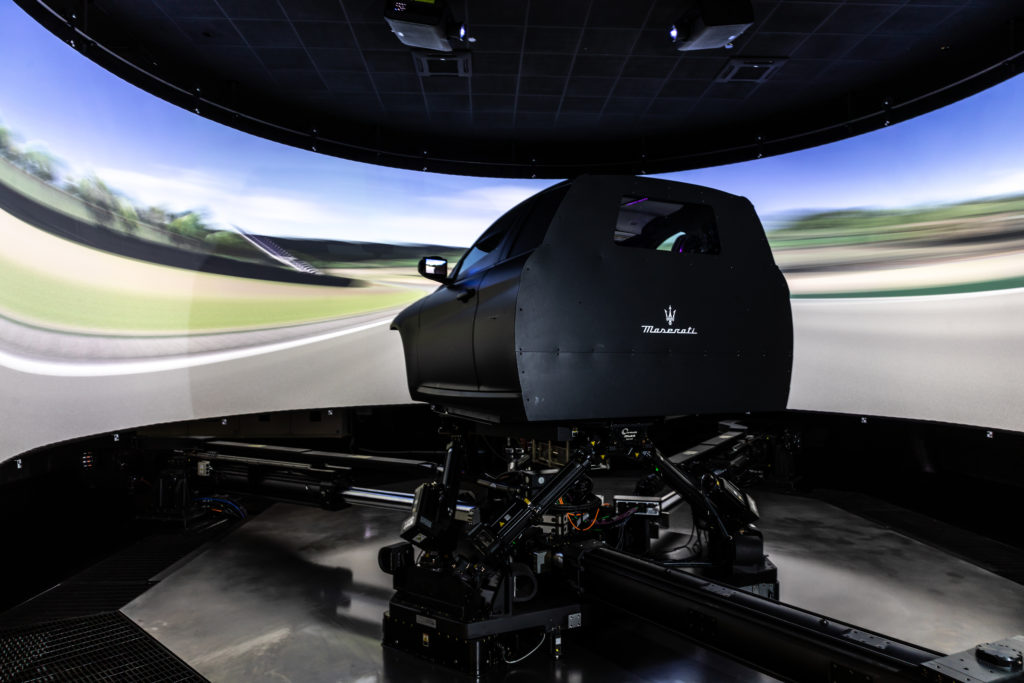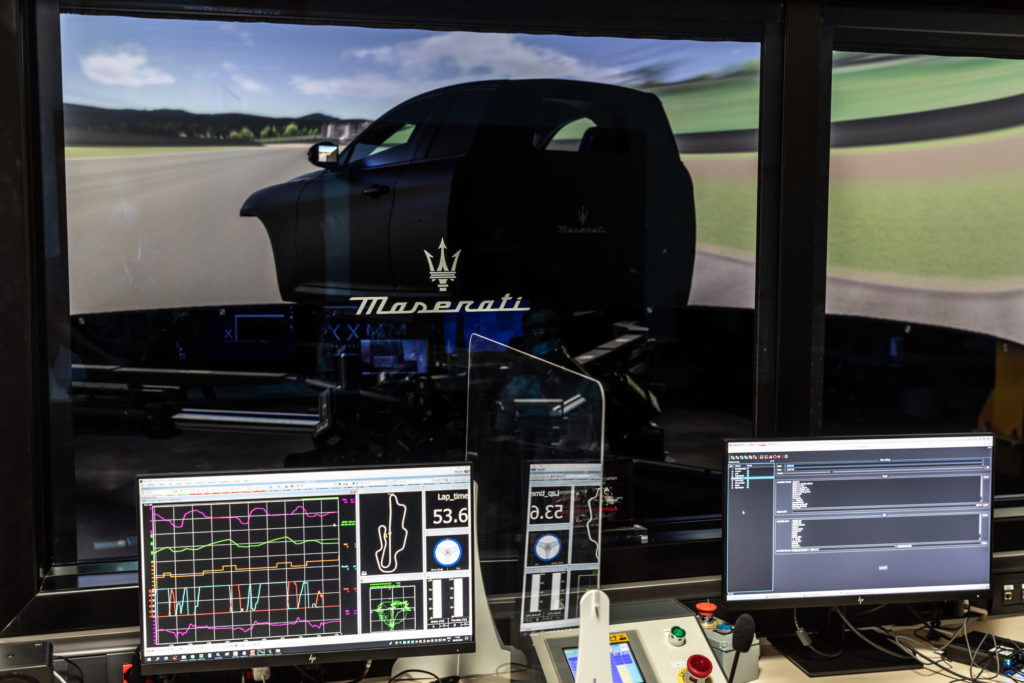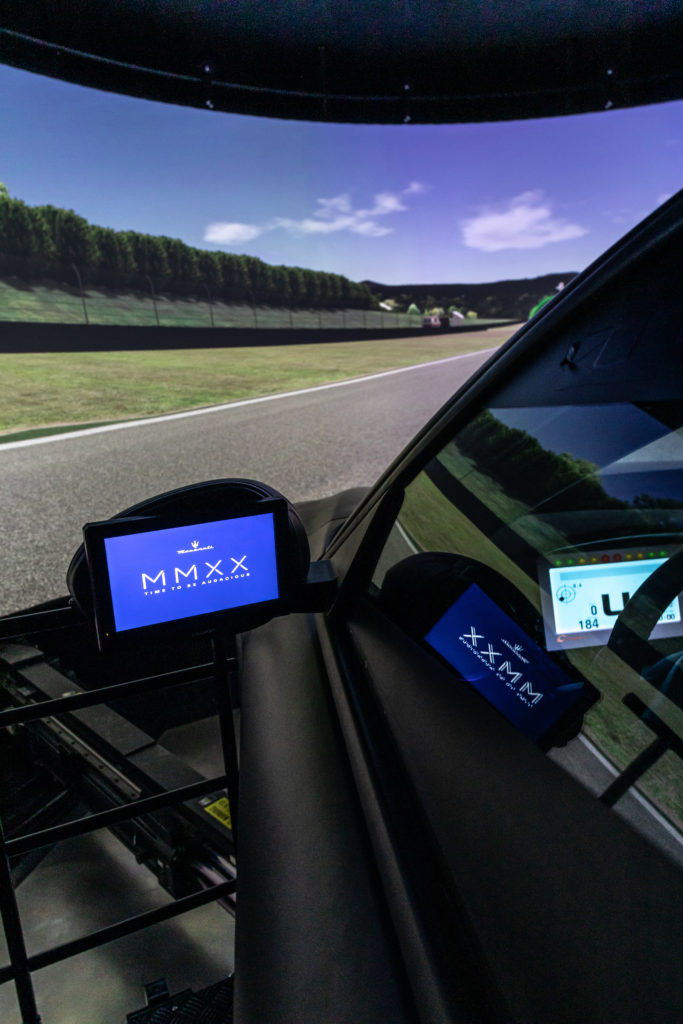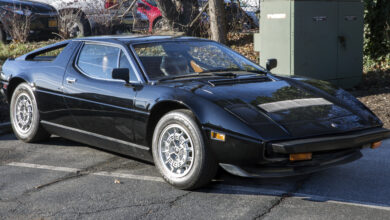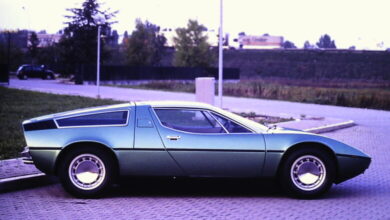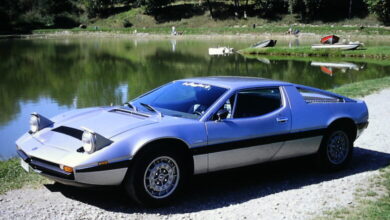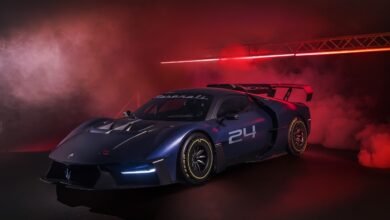EXCLUSIVE. Testing the Maserati dynamic simulator – The future of Maserati starts from Modena!
Visit to the Engine Lab, where the supercharged V6 "Nettuno" is born and at the Innovation Lab, where the future is planned.
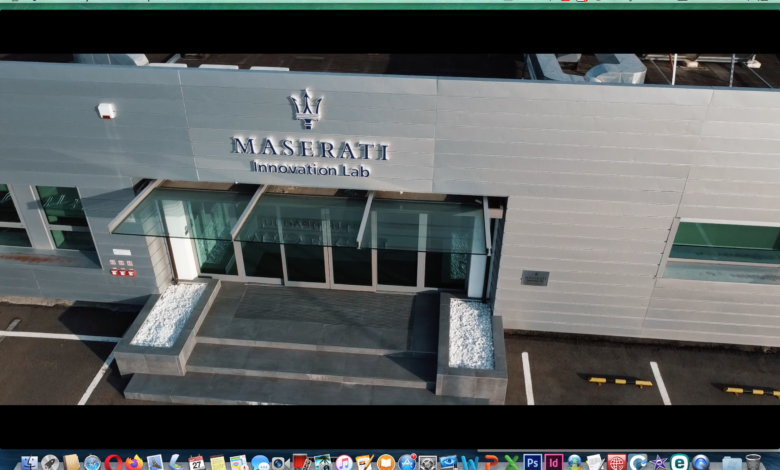
By Fabrizio Ferrari
Visit to the new Maserati complex in Modena: a unique company, in perfect harmony between tradition and futuristic technologies! Guests at the Engine Lab, inside the well known factory in Via Ciro Menotti and then at the Innovation Lab in Via Emilia Ovest, with dynamic simulator tests! A real full immersion in the new Maserati complex in Modena. A complex that includes not only the well known company in Viale Ciro Menotti, where various innovations have also been implemented, both in the field of experimentation and in that of production and testing. But, for some time now, in addition to the “parent” company, the Innovation Lab in Via Emilia Ovest has also been operating in Modena, whose name says it all.
And I want to start and tell you about the new Maserati from Modena, right from here where, among other things, a dynamic simulator for the virtual testing of cars has been developed, already widely used to quickly and accurately define the MC20 itself, the latest Maserati jewel, born practically first on the simulator, when there were no prototypes running on the road yet.
Eng. Giuseppe Raimondi, who welcomed me into the specific department of the Innovation Lab, before letting me try the simulator, showed me some of the basic characteristics of this very useful machine which, to most people, may seem almost little more than a game, but which in reality, I can now assure you, dispenses sensations that are very close, if not even superior to reality itself.
But let’s take it easy, together with Eng. Raimondi, I will tell you about the incredible experience of the simulator test.
Here, within the Innovation Lab and in particular in this area dedicated to the simulator, all the new Maserati models are developed and tested. We have two types of simulator: the dynamic one and the static one. The dynamic simulator, subject of today’s test, is one of the most advanced in the world and is the same used for all the preliminary tests and fine-tuning of the MC20. In the future it will be used in the same way for the Grecale project (the next Maserati SUV), for the next GranTurismo, GranCabrio, etc.
G. Raimondi: This is one of the most advanced simulators in the world. A peculiarity distinguishes it from other dynamic simulators currently in use. Compared to simulators from other car companies, this simulator consists of two parts: a tripod and a hexapod. In this way we are able to expand the power of the simulation, because with the tripod we can simulate large displacements, with little acceleration and therefore in low frequency, while with the hexapod and the six actuators we go to work in the high frequency field (small displacements but with big accelerations). Therefore, with a traditional simulator you must always find the right compromise between what is the handling and the various movements or high frequency; in this way we are able to simulate both low and high frequencies, therefore large displacements but also strong accelerations. Considering the space available, which is not very large, the only slight discrepancy with reality occurs during the braking phase.
Fabrizio Ferrari: You are certainly not in a position to operate, such as Dallara, with its simulator which can count on much larger spaces.
G. Raimondi: Exactly! These are simulators with different purposes: in our case we are mainly interested in testing the driveability and comfort of the car on the road.
F. Ferrari: Clearly Dallara instead needs to test racing cars on the track, where only performance matters.
G. Raimondi: So in the end, to give to the driver a more realistic feeling even when braking, we have introduced five-point seat belts that pretension to simulate the longitudinal G-force on the body and seat cushions that swell , to simulate the lateral G-force when cornering.
F. Ferrari: This obviously to make the feeling during the simulation more realistic.
G. Raimondi: Exactly! G. Raimondi: Exactly! And the MC20 was the first car we developed in this way. 90% of the initial development was done in the simulator, with no cars on the road. Subsequently, with the arrival of the real prototypes on the road, the database that we had collected and developed in virtual mode was then 100% reconfirmed with the real data collected thanks to the cars being tested on the road.
F. Ferrari: It is clear that the real data collected later with the physical tests on the road thanks to the prototypes, were decisive for the final validation of the simulation system itself.
G. Raimondi: Obviously, the exact definition of the virtual driving model also depends on the perfect correlation of real data collected on the road by the test drivers who drive the prototypes.
F. Ferrari: It is clear that the perfect correspondence of the virtual model to the physical one and vice versa give a double guarantee: on the one hand that the simulation system is reliable and on the other hand that the development of the car therefore proceeds in the best possible way.
G. Raimondi: In fact, at the beginning the very innovative activity of collecting and processing virtual data, we started it using a laboratory car, especially as regards the measurement of tires, thus making the first correlations from the physical data collected. with virtual models, to then introduce the first data in the simulator.
F. Ferrari: Clearly in this way you have greatly speeded up the initial research experimentation, the one that usually takes much longer, in order to be able to concentrate better on the final configuration and optimize it in a short time.
G. Raimondi: Exactly. In addition to speeding up, we have also improved the quality of work, especially because the driver has the opportunity to control exactly the component currently being studied and tested, without the surrounding conditions changing and thus isolating the multiple variables which instead occur in the real situation.
F. Ferrari: In short, to clarify, you can carry out your test in dry conditions, even if it is actually raining, just to give a basic example within everyone’s reach.
G.Raimondi: Furthermore, in a few seconds we can change the virtual model and thus carry out a completely different type of test, if necessary. In this way we can immediately test different suspensions, differentials, set ups, etc.
F. Ferrari: Of course! Even completely change the car model, perhaps moving from the MC20 to the Grecale.
G. Raimondi: This new approach was fundamental, as it allows us to study new car models and also insert the driver, thanks to the virtual model, thus creating the conditions for testing, when a physical model, a prototype of the car, still does not exist. Very important to start having a whole series of feedbacks that normally only arrive in a second phase, when road tests with physical prototypes begin.
F. Ferrari: I guess you have never had prototypes so well made before, with many of the characteristics of the final product already and so few defects still to be corrected …
G. Raimondi: Exactly. With the optimization of the virtual model, we were thus able to calibrate all that part of the hardware, not only of the physical component of the suspension, but also for what concerns the active controls. In this way we have already been able to put an advanced model into the car, as regards the control of the differential, the shock absorbers, etc.
F. Ferrari: I imagine that in this way it is possible to acquire a much higher amount of data in a short time than with the “physical” tests on the road, which would take much longer.
G. Raimondi: You can directly compare the feeling of the driver, with what is the telemetry measured from the outside. In this way, you can immediately concentrate on those aspects and characteristics that interest you most and thus obtain the desired set-up very quickly. Not surprisingly, already in the development process of the MC20, the variants actually included in the physical prototypes were very few.
F. Ferrari: When you talk about feeling and comfort, what do you mean in terms of experimentation?
G. Raimondi: We carry out several tests to optimize the comfort of the car. Let’s start from the first tests where we choose the various oscillation frequencies of the front and rear suspensions. And for this we have specific tracks with a large database to compare ourselves with. After this initial phase, we instead move to various circuits, to verify the comfort of the car, at the level of low and high frequency cash flow. For example, a track that we use a lot to simulate everyday road driving is Puianello.
THE DYNAMIC SIMULATOR TEST:
But let’s now come to the actual test of the dynamic simulator by myself. I would like to clarify that I am certainly not a professional driver and above all that I had never previously had the opportunity to try a real simulator. Only I have played with a few “games”, many years earlier, on Playstation and Xbox with virtual driving games, equipped only with a “gamer” steering wheel and pedal. While even my personal supercar driving experience on the track is still very limited: only a couple of Maserati GranTurismo and an Alfa Romeo 4C at the Modena and Varano de Melegari racetracks.
Although, on the other hand, I can recall the experience of several road test drives of new models, formerly Lamborghini and in the last 15 years especially Maserati.
But a real simulator? Never tried! And it is therefore with a certain emotion, as well as with the right respect, that I approached this test, which intrigued me so much. Already the first phase of setting up the driver’s seat, seat and steering wheel, although identical to what is usually done with a normal car, seemed strange to me, almost unnatural. It will be for the instructions I received, for how to start the car, pardon the simulation software and then start maneuvering; maybe because I was immediately recommended to close the window as well as the door, to take advantage of the partial shielding (with a black film) of the same window in the upper part – film inserted specifically so as not to allow the eye to perceive the real surrounding environment laterally – while the vision is instead concentrated forward on the virtual track. Or maybe it was also due to these continuous lockdowns which, for about a year now, have allowed me to drive on very few occasions, even my own personal car; or maybe it was the heavy lunch …
the fact is that, as soon as the operator gives the green light and the (virtual) handbrake release button is pressed on the central tunnel (in practice, the ok to start the simulation software), already from the very first meters (albeit virtual) ) the feeling immediately seemed very strange to me, I would say too realistic and certainly challenging (at least for me).
My brain was clearly not aligned and every maneuver amplified my driving difficulties, almost as if I were a real neophyte! Of course, I am a neophyte, but of the simulator, certainly not of the real driving! Gradually, I began to gain a little more confidence and, finding myself on the virtual Modena track, which I had already ridden in the past with a real Maserati (obviously on the “real” track), I began to pick up a minimum of pace. But there was always that strange feeling of not being completely in control: above all I struggled to understand what the braking points and the relative braking might be, while I found myself only a little better with the trajectories.
Unfortunately, it may have been the lasagna (perhaps still to be completely digested), or the forced inactivity for too many months but, while I was beginning to improve, albeit slightly, my driving feeling, the mental effort of adaptation, in the end it must have resulted too big for me, at least for my first experience, so much so that I began to feel a growing physical discomfort.
While continuing for another two or three laps at a decidedly slow pace, the effort of managing everything was felt more and more evident, especially on my stomach. To which, in spite of myself and a little reluctantly, I decided to suspend the test, in order not to risk a possible crash, even if virtual, or a drastic worsening of my general physical discomfort.
In the end, I must conclude that, although it was my first test that was too short and above all certainly not satisfying for my ego as a driver, in reality it was a really interesting experience. I would never have believed that realism was at such high levels, to the point of making everything, as far as I’m concerned, certainly more challenging than a test drive on the track with a real car! Of course, with the simulator you could be much more daring, without the risk of damaging the car, but it was certainly not the thrill of a possible crash, even if virtual, that I was looking for, quite the opposite. Also because, it is true that in this way no damage is done to the car, but it is not as assured that it will not damage themselves.
I am almost certain that on the next attempt, thanks to this very first experience, it will probably be a whole other story. Also because the strange feeling I had, almost “car sick”, was basically similar to the feeling that I reported, a few times and many years before, sitting as a passenger next to an experienced driver or pilot, while carrying the supercar to the limit on the track. But in that case it’s completely natural, because if you don’t drive, you don’t even have control of the situation …
Truly an incredible machine, the Maserati dynamic simulator of the Innovation Lab in Modena. In terms of realism and feeling: anything but a “games”, as many would be inclined to think, but as demanding as, if not more, real driving on the track! A perfect tool for pilots and test drivers and a formidable advantage for the development and design of engineers.
For the normal everyday driver, however, a strong experience, certainly not for everyone!
